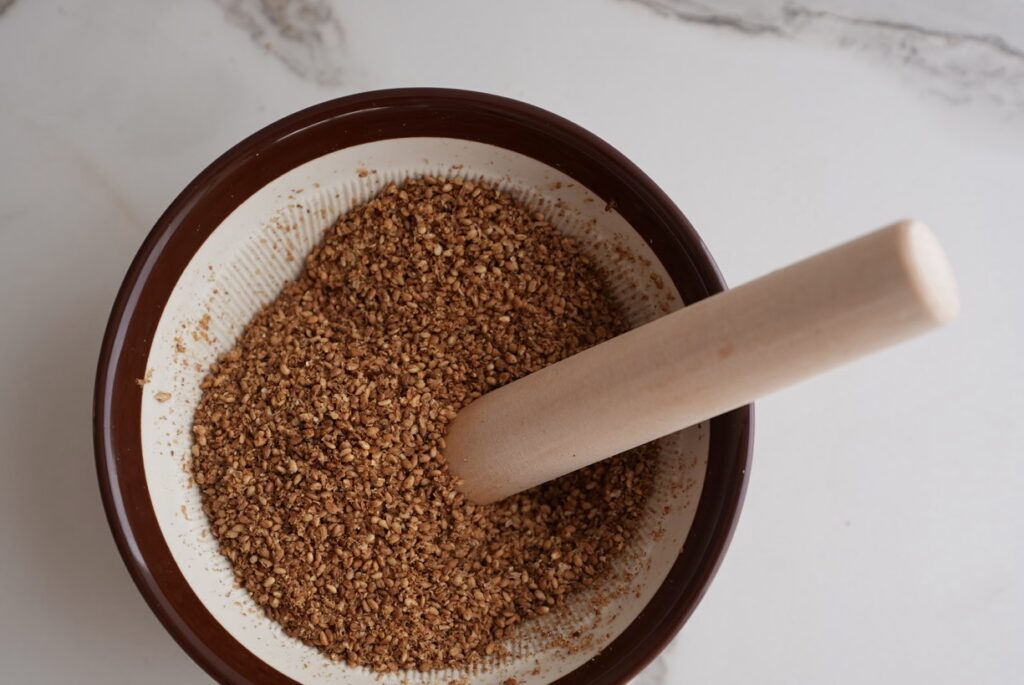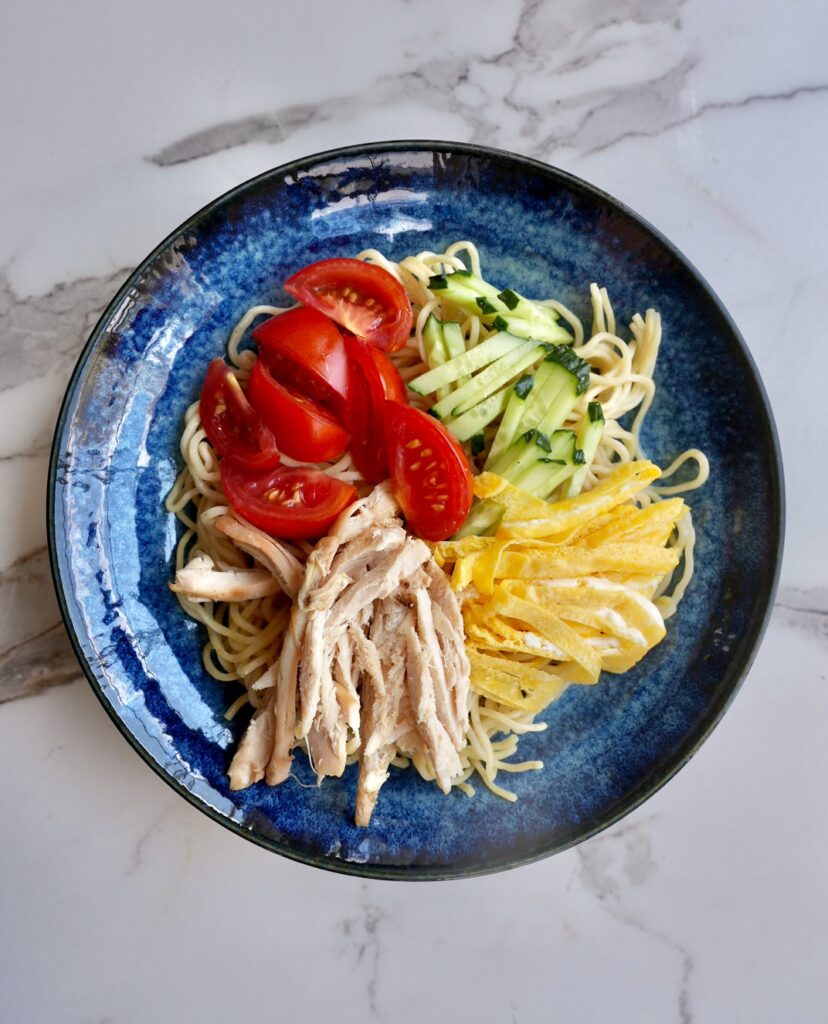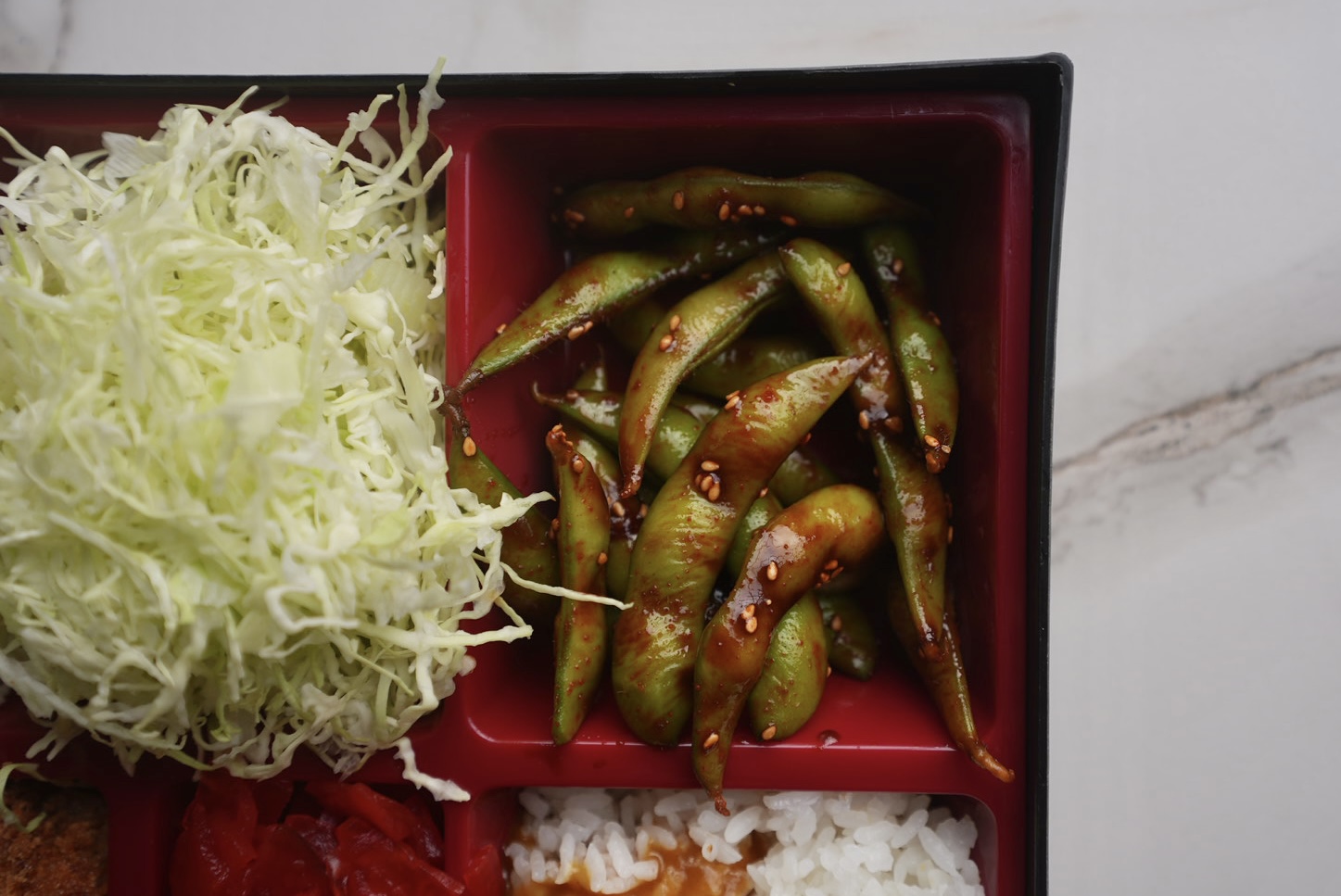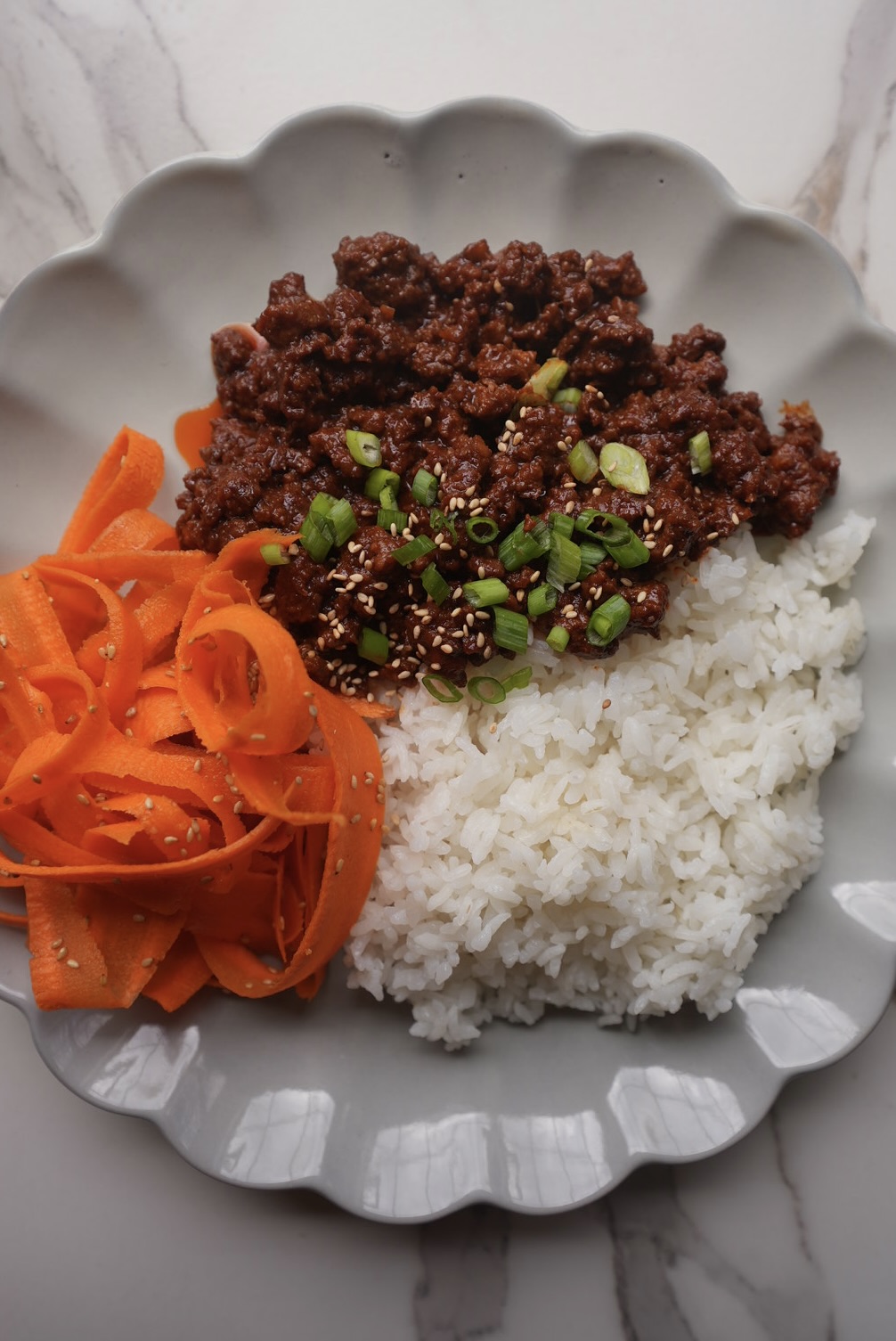I’m pretty picky when it comes to salad dressings, and I’m convinced it’s because I grew up eating Japanese goma dressing. Once you’ve had it, everything else feels inferior! Seriously.
Goma dressing is rich, nutty, savory, slightly sweet, and unbelievably creamy, and it somehow makes even the most boring bowl of greens taste like something you’d get at a Japanese café. It’s the kind of dressing you don’t drizzle… you pour it on and happily drown your salad in it! It’s so so good.

At its core, goma dressing is all about sesame. Toasted sesame seeds give it that deep, nutty aroma; sesame oil adds warmth and roundness; and Kewpie mayo makes the whole thing velvety and creamy. The flavor layers come together with grated garlic, soy sauce, a splash of rice vinegar, and just a touch of sugar to balance everything. It hits every part of the palate: creamy, savory, tangy, sweet, and intensely aromatic.

What I love most is how versatile this dressing is.
Yes, it makes incredible salads (especially a simple cabbage or iceberg salad), but it also doubles as a dipping sauce for veggies, a drizzle for grain bowls, a spread for sandwiches, or even a sauce for cold noodles. Once you have a jar of homemade goma dressing in your fridge, you’ll start finding excuses to use it on everything.
And honestly? I blame it for turning me into a salad dressing snob – in the best possible way.

Ingredients
Japanese goma dressing is all about balance: rich, nutty, creamy, tangy, and just a little sweet. Each ingredient plays a specific role in building that signature depth of flavor. Here’s what you’ll need to make it:
- Sesame Seeds: The nutty, aromatic base that gives goma dressing its unmistakable flavor.
- Garlic: Adds a sharp, savory edge that keeps the dressing from tasting too heavy.
- Kewpie Mayo: Creates the creamy, velvety texture and adds a hit of umami.
- Rice Vinegar: Brightens everything with gentle acidity.
- Soy Sauce: Brings salty, savory depth that ties all the flavors together.
- Sugar: Balances the tanginess and enhances the nuttiness.
- Sesame Oil: Boosts the toasted sesame flavor and adds a fragrant finish.
How to Crush the Sesame Seeds
In Japan, traditionally a suribachi and surikogi are used to crush the sesame seeds. A suribachi is a Japanese mortar with ridged, textured walls designed specifically for grinding ingredients like sesame seeds into a paste. The surikogi is the accompanying wooden pestle, which gently presses and crushes ingredients without damaging the mortar’s grooves.
No, you don’t need a suribachi and surikogi – They’re wonderful tools, but totally optional. You can also crush toasted sesame seeds using:
- A mortar and pestle
- A spice grinder or coffee grinder (pulse lightly)
- A zip-top bag + rolling pin
The goal is just to break the seeds open to release their oils and flavor, and any of these methods will get you there.

Beyond crushing sesame seeds for goma dressing, a suribachi and surikogi are used in many traditional Japanese cooking techniques:
- Grinding Spices: They’re perfect for grinding seeds like poppy, mustard, or shiso seeds to release their oils and aroma.
- Making Pastes: You can turn garlic, ginger, or miso into smooth pastes for sauces, marinades, or soups.
- Mixing Dressings and Sauces: The textured bowl helps emulsify ingredients like miso, vinegar, soy sauce, and oils for dressings or dipping sauces.
- Traditional Japanese Sweets: Some wagashi recipes use the suribachi to grind beans or seeds into fine pastes.
The ridges of the suribachi make it uniquely effective at grinding and emulsifying without overworking the ingredients, which is why it’s such a staple in Japanese kitchens.
Different Ways to Enjoy Goma Dressing
Goma dressing is incredibly versatile. Once you have a jar in your fridge, it becomes one of those sauces you reach for constantly. Here are some of the best ways to use it:
- Cabbage or Iceberg Salad: The classic pairing, where the crisp, watery greens soak up the rich, nutty dressing perfectly.
- Grain Bowls: Drizzle it over rice, quinoa, or farro to instantly add creaminess and umami.
- Veggie Dip: Serve it as a dipping sauce for raw veggies, chicken skewers, or dumplings for a savory, sesame-forward bite.
- Cold Noodles: Toss it with chilled soba or ramen for a refreshing, creamy noodle dish.
- Sandwiches or Wraps: Spread it inside sandwiches or wraps for extra richness and a punch of sesame flavor.
- Roasted Vegetables: Spoon it over warm veggies like broccoli, carrots, or sweet potatoes to add depth and sweetness.
- Tofu Dishes: Use it as a sauce for baked, pan-fried, or chilled tofu to bring out its delicate flavor.
- Poke or Sushi Bowls: Drizzle it over fresh fish bowls for a creamy, umami-rich finishing touch.
- Chicken or Tuna Salad: Mix it into shredded chicken or canned tuna for a sesame-forward twist on a classic.

Japanese Sesame Seed (Goma) Dressing
- Total Time: 11 minutes
Description
Goma dressing is a creamy, nutty, umami-rich Japanese sesame dressing that’s perfectly balanced with sweetness, tang, and deep roasted sesame flavor.
Ingredients
- 1/2 cup roasted sesame seeds
- 2 cloves garlic, grated or minced
- 1/3 cup Kewpie mayonnaise (add more for a creamier dressing consistency)
- 3 tbsp rice vinegar
- 3 tbsp soy sauce
- 1 tbsp sugar
- 1 tbsp toasted sesame oil
Instructions
- Place the sesame seeds in a dry skillet over medium heat and toast until golden brown, about 6-8 minutes, stirring frequently to prevent burning.
- Transfer the toasted seeds to a suribachi and crush them with a surikogi (or use a mortar and pestle, or place them in a ziplock bag and crush with a rolling pin) until fragrant and partially broken down.
- In a separate bowl, combine the crushed sesame seeds with the garlic, Kewpie mayonnaise, rice vinegar, soy sauce, sugar, and sesame oil. Whisk until smooth and well combined.
- Shake well before use. Use over salads, grain bowls, or noodles, and store in an airtight container in the fridge for up to a week.
- Prep Time: 5 minutes
- Cook Time: 6 minutes
Nutrition
- Serving Size: 8-10







0 Comments